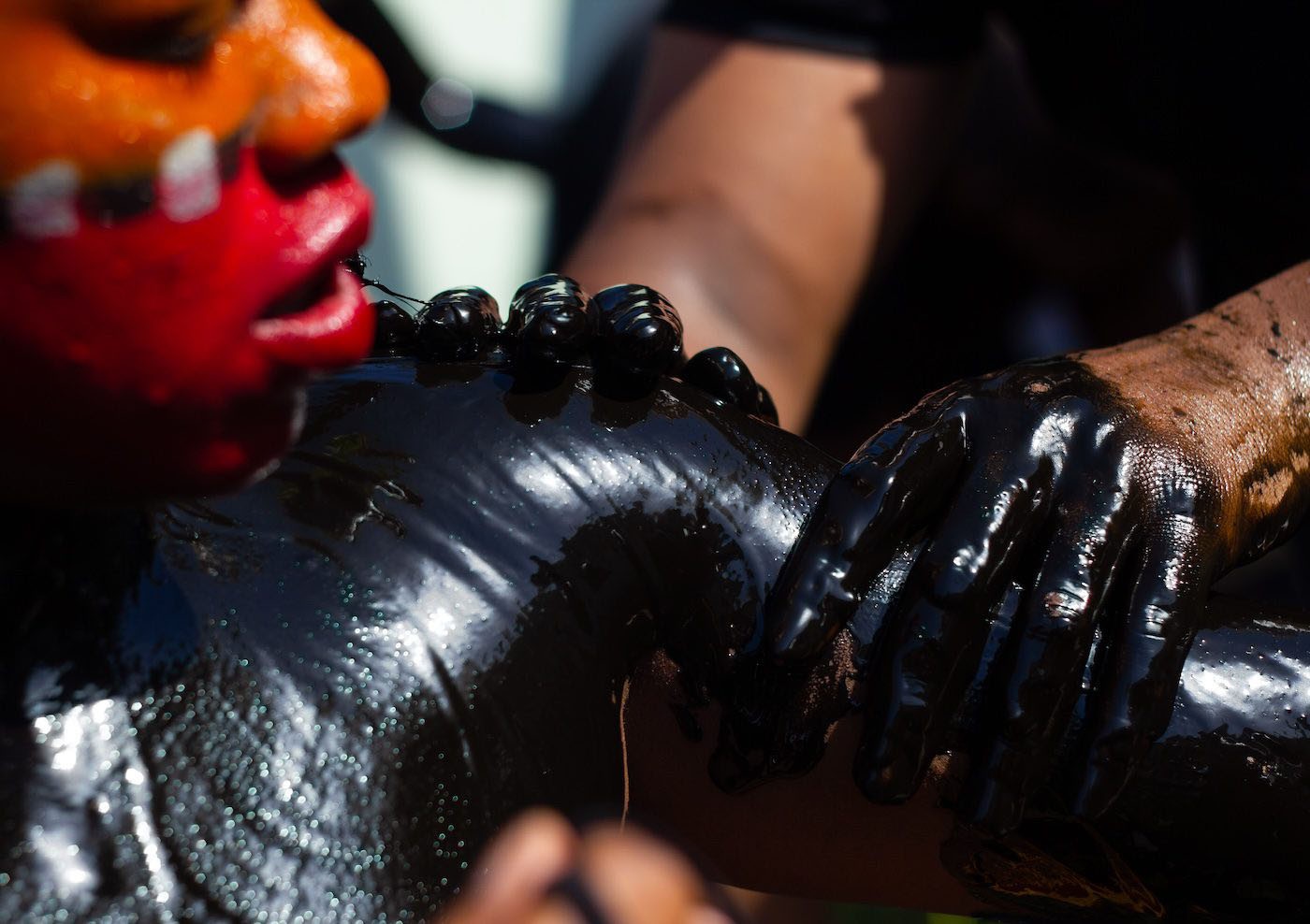A Human Dimension
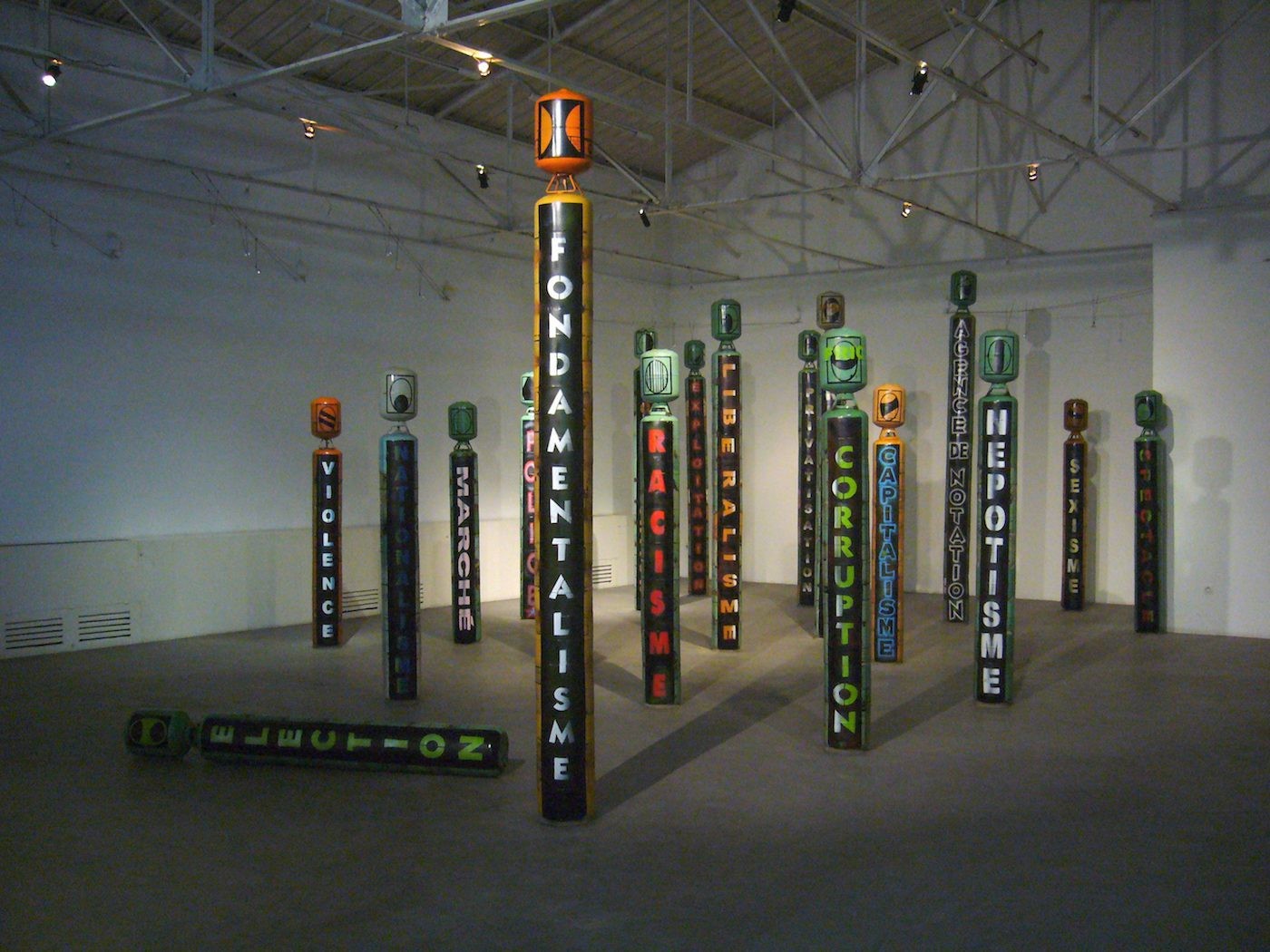
11 December 2017
Magazine C& Magazine
7 min read
Dagara Dakin: What are the roots of your artistic practice? Justine Gaga: When I was very young, I was fascinated by the pictures taken by my father, who was a photographer before he switched to farming. I think that’s where my artistic practice comes from. DD: Have there been any decisive meetings in the course …
Dagara Dakin: What are the roots of your artistic practice?
Justine Gaga: When I was very young, I was fascinated by the pictures taken by my father, who was a photographer before he switched to farming. I think that’s where my artistic practice comes from.
DD: Have there been any decisive meetings in the course of your career that confirmed your decision to follow this profession, and if so, can you tell us more about them?
JG: First of all, I did my training at the Atelier Viking (Viking Kanganyam André is one of the doyens of Cameroonian painting). It was the only studio at that time that had a well-stocked library with a rich supply of works on the visual arts. So it was in the process of devouring these books that I began to get a sense of what I was going to pursue as a profession. But in the period shortly before I started training at Viking, I was already doing studio work with Joe Kessy and Angel (who were also training at Viking). While we were in the studio, we received a visit from Didier Schaub (former artistic director of doual’art), who left very happy with the work being done there. It was this enthusiasm, then, that prompted me to start training at Viking. Another crucial meeting was with Goddy Leye, initially following an intense discussion about art at Viking, and later when I embarked on a residency at ArtBakery (a contemporary art lab in Bonendale founded by Leye in 2003). There, I received training that was far more conceptual; with him I learned to conceptualize an idea. Being around him had a formative influence on me. I have him to thank for my whole development. Finally, there was my participation in the Exit Tour project (a touring project realized in 2006 by seven contemporary artists across seven countries in West Africa with the idea of going to the Dakar Biennale). This was really educational for me. Participating in this project helped to reinforce my choice to follow this profession.
DD: Is this the first time you have participated in the SUD (Salon Urbain de Douala) triennial? How is this event different from the other major art events taking place on the continent that you’ve been involved in? And, for that matter, has participating in these events had an impact on the reception of your work? Are you more in demand for other exhibitions on the strength of your being part of these artistic events?
JG: I’ve already been involved a few times in the SUD triennial and the Dakar Biennale. Simply put, the SUD triennial is a public art festival that started in 2007 and happens every three years. It is a private initiative that sets out to inscribe art in the public space (in the city of Douala). This time the triennial is open to artists from Africa and beyond who are mostly invited to visit the urban space so that they can draw inspiration from it and make suggestions about the main theme, of course, but also to enrich the creative direction of this festival, while giving visibility to the different actors.
The SUD triennial installs artworks in the public space permanently or temporarily, and these works are intended to create a dialogue with the city and its inhabitants, to inform, examine, question, and draw attention to what might give meaning to the collective space, be it physical, mental, or spiritual. On the other hand, the Dakar Biennale is an initiative developed by the Ministry of Culture and Tourism in Senegal — it takes place every two years. It will be the thirteenth edition next year. It is open to African artists, living on the continent or elsewhere — its aim is to promote art and show what is happening in Africa, to bring talents to light, and, finally, to valorize contemporary art in Africa.
DD: Does the fact that the triennial is geared to the public and the city change anything about the way people participate, when compared with the Dakar Biennale, for example?
JG: If I think about these two events, I would simply say that the contextual approach is different. As far as the SUD triennial is concerned, it means that the city is buzzing with excitement because of the works that are present in the urban space. What’s very interesting is that after the event the works continue to dialogue with the population and with the city. By contrast, the Dakar Biennale lasts one month; it hosts one-off exhibitions and afterwards the works are taken down and sent back to the respective artists. The Dakar Biennale is a major validating entity and one of the most important biennales on the African continent. It cultivates a fairly extensive international platform and attracts a lot of theorists, art critics, art historians, and collectors from various parts of the world. Seen from both within and without, these two events have given me a certain notoriety, a visibility, a sense of credibility even, on the professional level, both nationally and internationally. They have led me to command a certain respect and consideration from the public and from other artists. Being selected for these two events touched me deeply — it was a moment of pride, an opportunity for me to exchange and share, which sees my artistic career enriched and creates a sort of spirit of emulation in my daily work. It is clear that this kind of recognition will help me to expand the view I have of the world of contemporary art and will give rise to further fruitful and healthy involvements.
DD: Which project are you planning to present at the SUD triennial this year? What’s your relationship to performance? Is it something you do regularly?
JG For this triennial, my proposal is for a sculpture that’s around eight meters tall and made of iron, aluminum, and rubber. The work starts with a performance and ends with a sculpture entitled The Load. I’m totally inspired by the theme of SUD2017, which deals with The Human Dimension and refers to fundamental questions such as the notion of humanism and solidarity. As the work is currently in the conceptual phase and waiting to be realized, I’ll hold off giving any more details until it’s finished. To come back to performance, it’s true that I don’t do it regularly but that doesn’t stop me from calling on it when necessary.
DD: Before you participated in the triennial, was the question of human rights an integral part of your thinking or your artistic approach?
JG: Probably. My artistic approach examines social injustices and inhumane practices, which naturally brings up and highlights the issue of human rights.
Dagara Dakin is a freelance writer and curator based in Paris.
Translated from French by Simon Cowper.
</strong></em>
This Interview was first published in our latest Print Issue #8. Read the full magazinhere.
Read more from
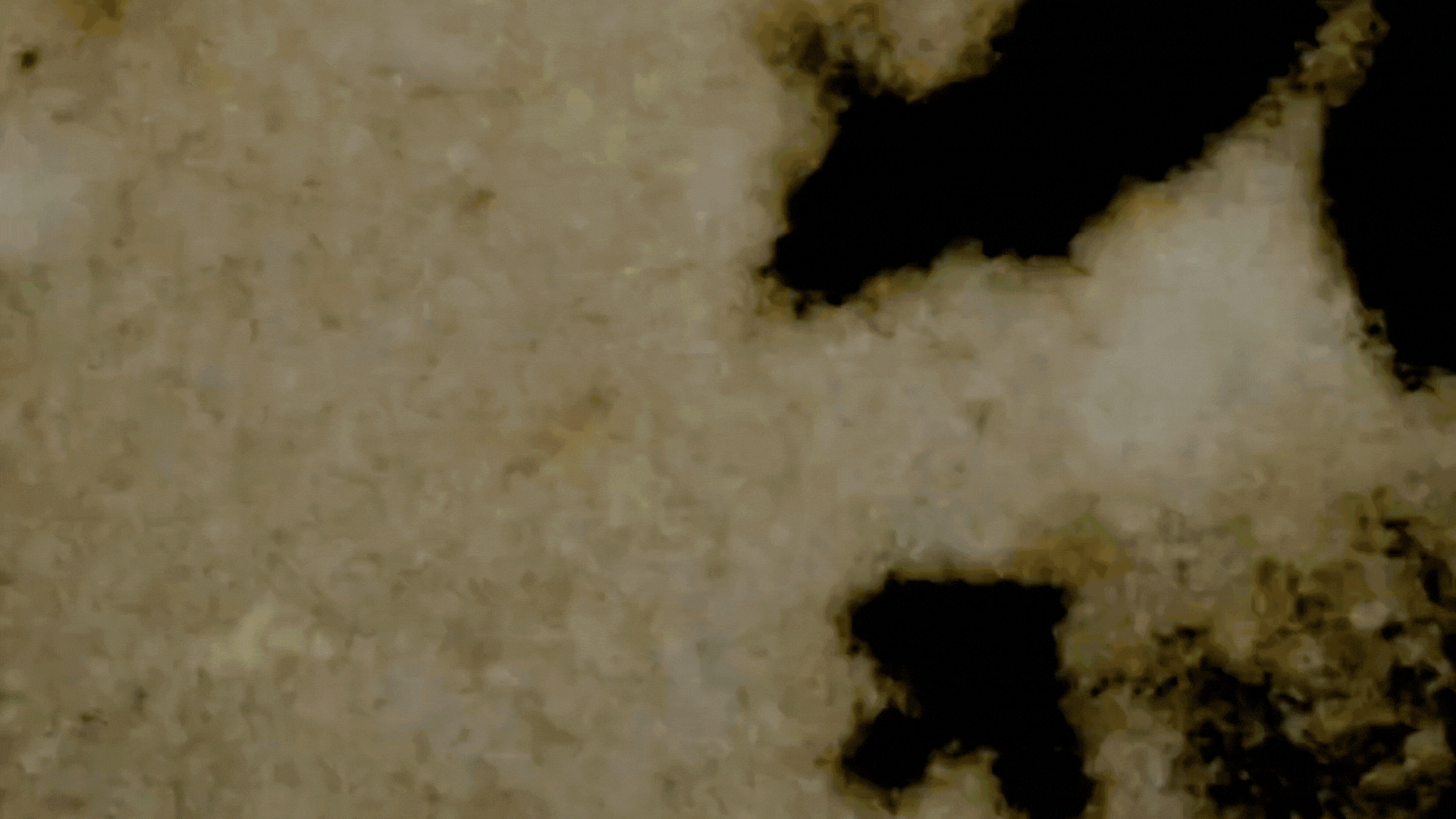
On Ghosts and The Moving Image: Edward George’s Black Atlas

Confronting the Absence of Latin America in Conversations on African Diasporic Art

On Exile, Amulets and Circadian Rhythms: Practising Data Healing across Timezones
Read more from
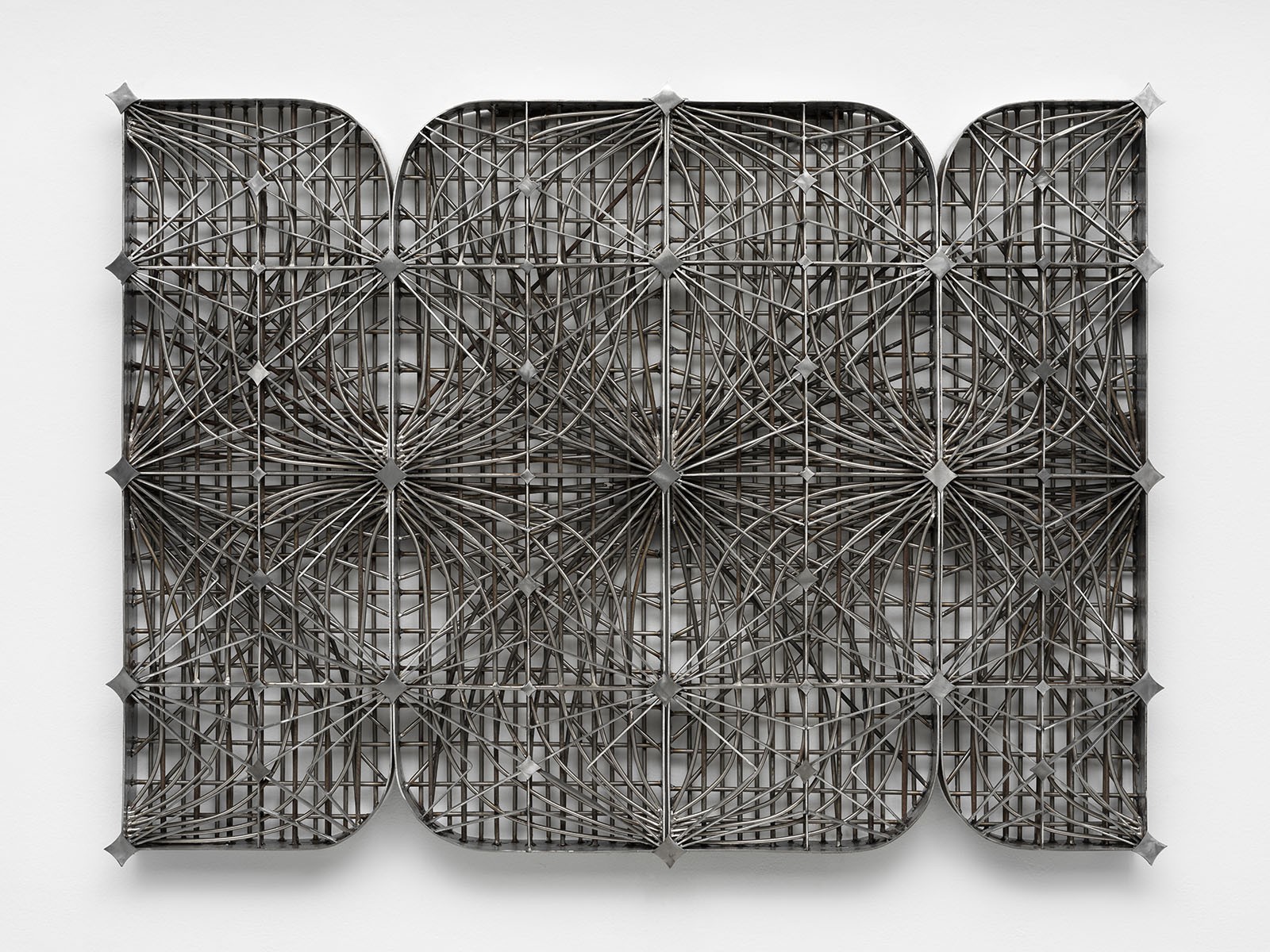
Jesús Hilário-Reyes: Dissolving Notions of Group and Individual
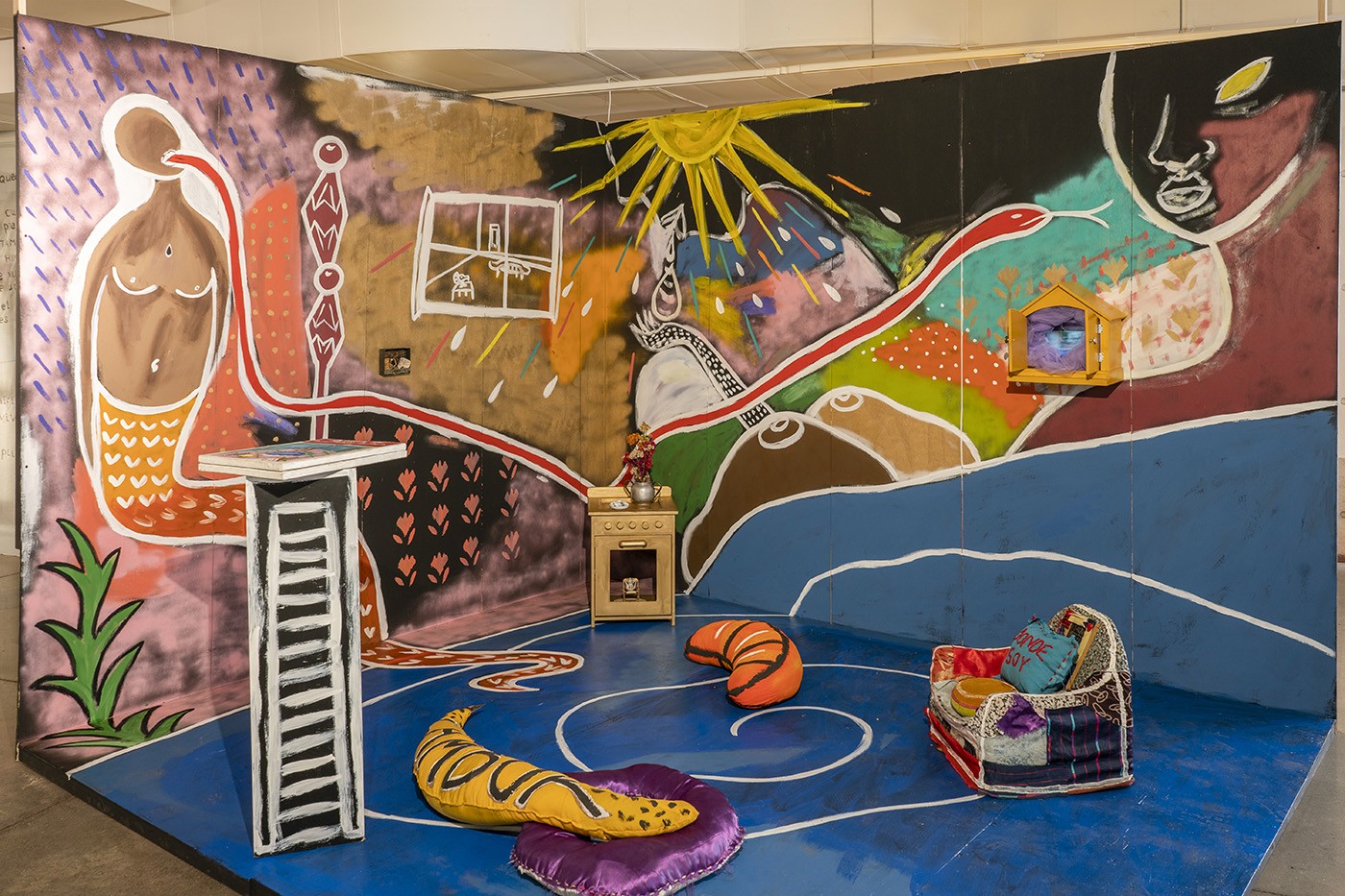
A Biennial that relates sound to space and bodies
